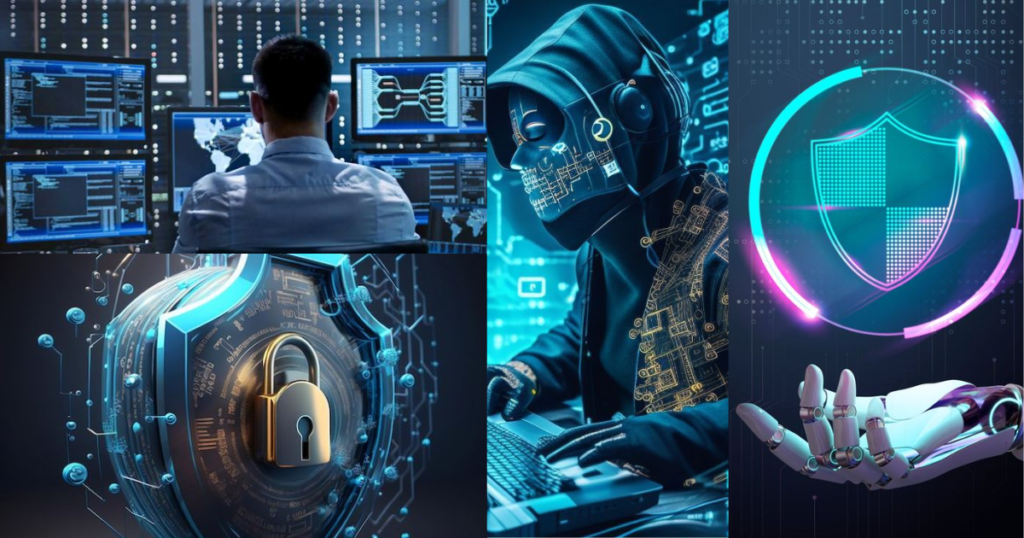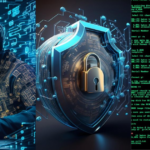The future of cybersecurity is a constantly evolving landscape, where technology advancements have exponentially increased cyber threats, making it challenging to safeguard personal information and online assets. The current state of cybersecurity is a perpetual cat-and-mouse game between cybercriminals and security experts. Cybersecurity has expanded beyond protecting against malware and viruses to include advanced threats like phishing, ransomware, and DDoS attacks, with cybercriminals leveraging AI-powered tools for targeted attacks. According to Cybersecurity Ventures, global cybercrime costs are projected to reach $10.5 trillion annually by 2025.
This blog post will explore these emerging technologies and solutions, delving into AI, IoT security, cloud security, and more, to understand how they can help us stay ahead of cyber threats. By the end of this post, readers will have a comprehensive understanding of the emerging technologies and solutions revolutionizing cybersecurity, enabling them to make informed decisions about their cybersecurity strategy and stay ahead in the ever-evolving digital landscape.
Emerging Technologies in Cyber Security
The cybersecurity landscape is witnessing a significant transformation with the emergence of innovative technologies. These technologies are not only enhancing security measures but also introducing new challenges. Let’s dive into the world of AI, IoT security, and quantum computing to understand their impact on cybersecurity.
AI and ML are revolutionizing cybersecurity by:
- Anomaly Detection and Predictive Analytics: AI-powered systems can identify unusual patterns and predict potential threats, enabling proactive measures.
- AI-Powered Security Orchestration: AI streamlines security operations by automating tasks, reducing response times, and improving incident management.
IoT devices are vulnerable to cyber threats, making security crucial. Key aspects of IoT security include:
- Securing Connected Devices: Implementing robust security measures for devices and networks.
- IoT-Specific Threats and Vulnerabilities: Understanding unique threats like botnets and DDoS attacks.
Quantum computing is transforming cryptography with:
- Post-Quantum Cryptography: Developing encryption methods resistant to quantum computer attacks.
- Applications: Secure data transmission, digital signatures, and encryption for IoT devices.
Cloud and Network Security
A robust cloud security architecture is crucial to protect your data and applications. Key considerations include:
- Identity and Access Management (IAM): Implementing IAM solutions to control user access and permissions.
- Data Encryption: Encrypting data both in transit and at rest to prevent unauthorized access.
- Network Segmentation: Segmenting networks to limit the spread of potential breaches.
- Regular Security Audits: Conducting regular security audits to identify and address vulnerabilities.
SDN and NFV are revolutionizing network security by:
- Centralizing Network Control: SDN enables centralized control of network security policies.
- Virtualizing Network Functions: NFV virtualizes network functions, reducing vulnerabilities.
- Improving Network Agility: SDN and NFV enable faster deployment of security services.
Cybersecurity Talent and Education
The cybersecurity industry faces a significant challenge – the skills gap. As threats evolve, organizations struggle to find skilled professionals to combat them. In this section, we’ll explore the cybersecurity skills gap, education and training programs, and building a diverse and inclusive cybersecurity team.
The Cybersecurity Skills Gap and Its Impact
The skills gap has severe consequences, including:
- Increased Vulnerabilities: Unfilled positions leave organizations vulnerable to attacks.
- Decreased Productivity: Existing teams struggle to manage workload, leading to burnout.
- Compliance Risks: Organizations risk non-compliance with regulations.
Cybersecurity Education and Training Programs
Education and training programs are essential to bridge the gap. These programs:
- Develop Skills: Provide hands-on training and develop essential skills.
- Certifications: Offer industry-recognized certifications.
- Continuous Learning: Foster a culture of continuous learning.
A diverse and inclusive team is vital to combating threats. To build such a team:
- Recruit Broadly: Recruit from diverse backgrounds and industries.
- Foster Inclusion: Create an inclusive culture that encourages collaboration.
- Develop Talent: Develop and mentor talent from within.
Conclusion:
As we conclude our journey through the emerging technologies and solutions transforming cybersecurity, it’s clear that the landscape is evolving rapidly. We’ve explored the transformative power of Artificial Intelligence (AI) and Machine Learning (ML), the importance of securing the Internet of Things (IoT), the dawn of Quantum Computing and post-quantum cryptography, the imperative of Cloud and Network Security, the advancements in Advanced Threat Detection and Response, and the critical need for Cybersecurity Talent and Education. These innovations are revolutionizing cybersecurity, enabling organizations to stay ahead of threats.



